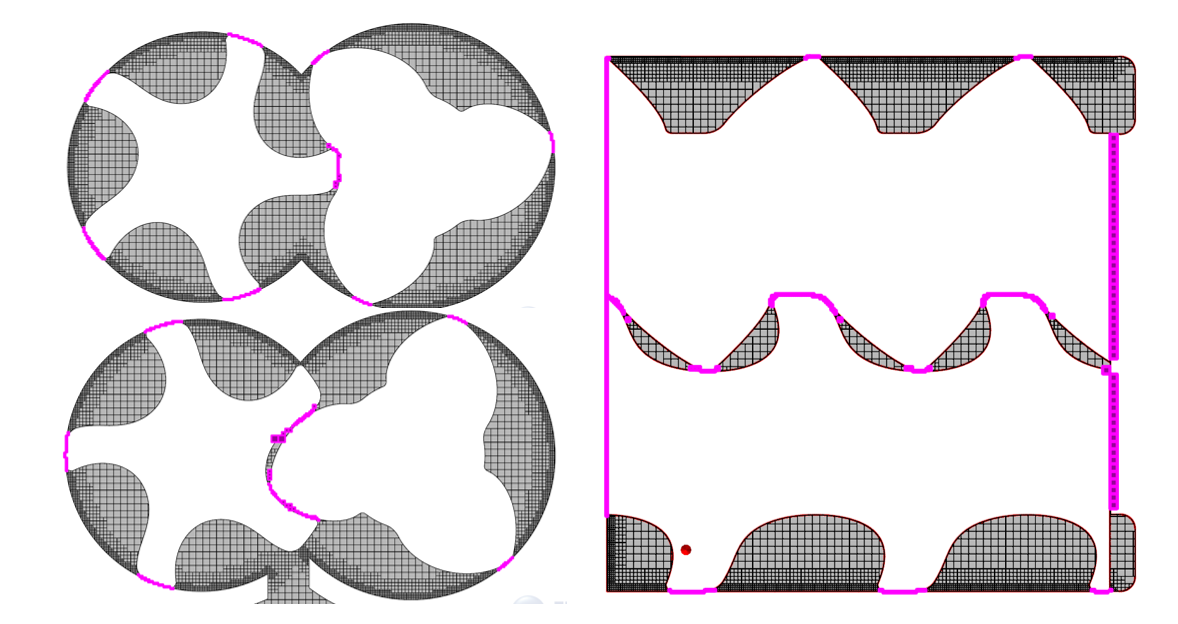Clearances and leakages through them play a vital role in determining the efficiency of positive displacement machines, especially of screw compressors. It is of interest to accurately predict the overall machine behavior including the leakage flows, even during the early design phases. CFD (Computational Fluid Dynamics) methodologies can potentially address this problem; however, the computational efficiency is limited by the well-known issue: dimensionality. This issue arises due to the fact that rotors are sized in tens of centimeters whereas the clearances are in the order of (sub) microns.

Here we present a reduced-order model called the Gap Model, embedded in FlowVision CFD software package to overcome this problem. Our approach is based on Poiseuille flow assumption and intends to evaluate fluid flows within very thin channels without resolving these regions with traditional fine mesh discretization. In such cases when two wall boundary conditions, such as rotor-to-rotor or rotor-to- chamber in a screw compressor, are close to each other less than mesh resolved dimensions, only one row of computational cells are constructed between the walls and an extra source term is added to the momentum equation, describing the frictional force produced by clearance walls. The presented model is applied to ICCS2015 Test Case Screw Compressor developed by Centre for Compressor Technology of City, University of London. CFD predictions using this leakage model is in agreement with experimental results within 6.3 percent maximum error. The calculation times are reduced down to less than a day for obtaining stable and converged results.
U Ozturk1, S Soganci1, V Akimov2, O Tutkun1, A Aksenov2
1 Capvidia NV, Leuven, Belgium
2 TESIS, Moscow, Russia